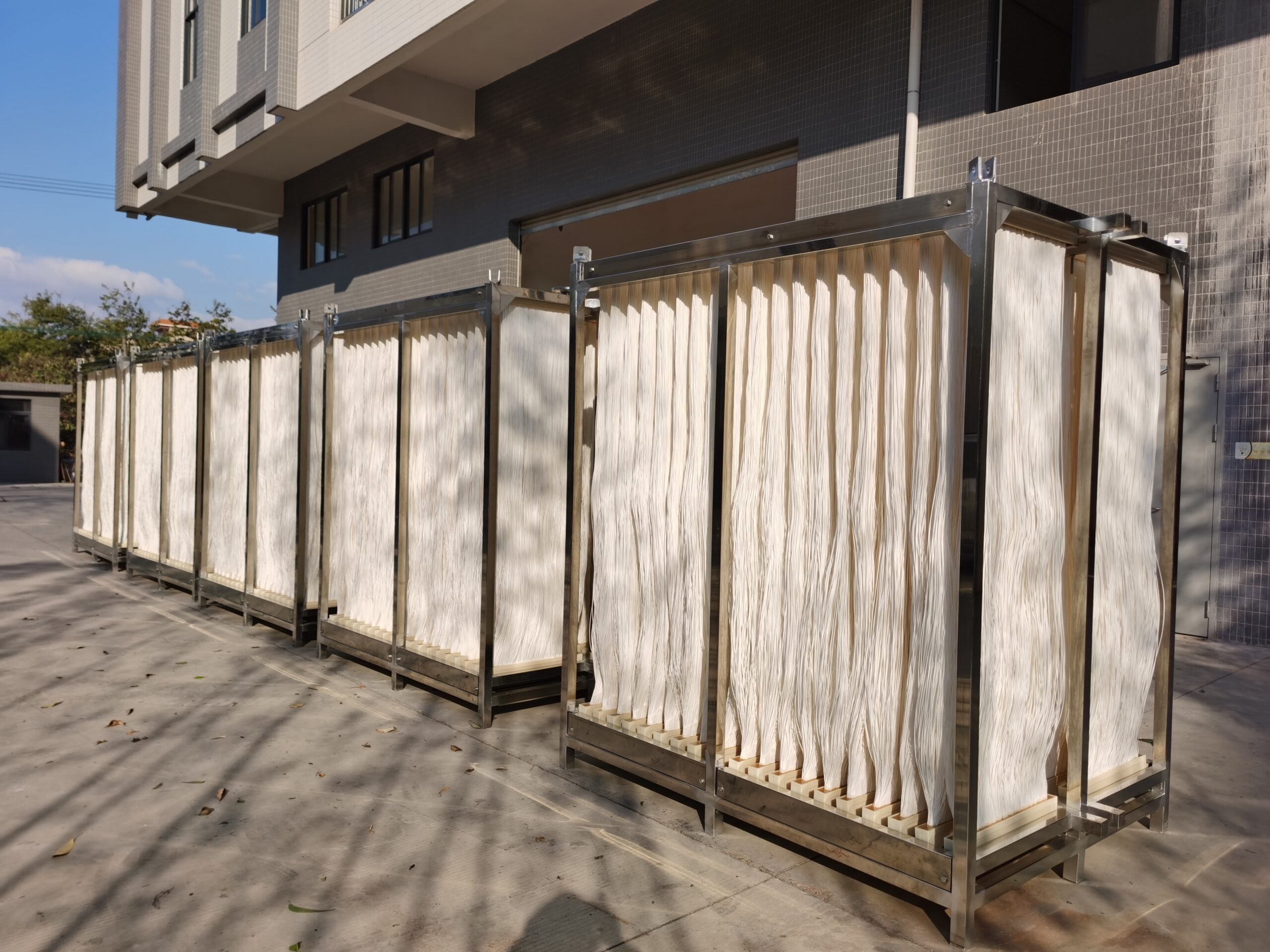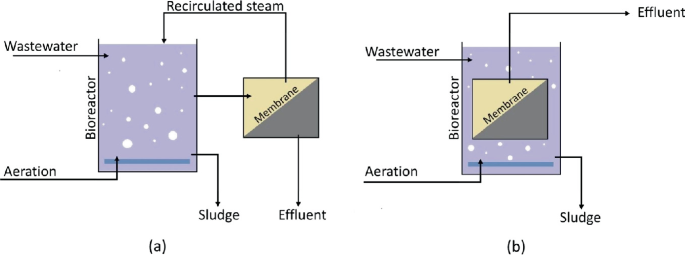Exploring the Benefits of Membrane Bioreactor in Municipal Wastewater Plants
Wiki Article
Membrane Layer Bioreactors Explained: Efficient Solutions for Clean Water
Membrane layer bioreactors (MBRs) have emerged as an advanced solution for dealing with the pushing obstacles of wastewater therapy - Membrane Bioreactor. By integrating organic processes with advanced membrane layer purification, MBRs not only boost the high quality of cured water however also decrease the spatial requirements of therapy centers.
What Are Membrane Bioreactors?
Membrane bioreactors (MBRs) are advanced wastewater treatment systems that integrate biological degradation procedures with membrane purification innovation. This integration allows for the effective elimination of pollutants from water, making MBRs a preferred option in different applications, including metropolitan wastewater treatment and industrial effluent administration.
Among the essential advantages of MBRs is their capability to create top quality effluent, often appropriate for reuse in watering or industrial procedures. Furthermore, MBRs call for a smaller footprint compared to conventional therapy systems, making them excellent for urban setups where room might be limited.
Additionally, MBRs can efficiently handle differing influent loads and are much less susceptible to the results of hazardous shocks. These qualities add to their expanding popularity as a lasting service for addressing the boosting need for clean water while decreasing environmental effects.
Just How Membrane Bioreactors Job
While the operation of membrane bioreactors (MBRs) may seem complicated, it basically focuses on the synergy in between organic procedures and membrane layer filtration. MBRs integrate an organic therapy procedure, usually turned on sludge, with a membrane layer splitting up unit to deal with wastewater successfully.In an MBR system, wastewater is very first presented into a bioreactor where bacteria break down raw material and other contaminants. The organic activity minimizes the concentration of pollutants while advertising the growth of biomass. Following this organic treatment, the mixed alcohol is subjected to membrane filtration, which can be microfiltration or ultrafiltration, depending on the desired effluent high quality.
The membrane layers function as a physical obstacle, allowing water and small solutes to pass while keeping suspended solids and larger particles. This enables the system to preserve a high concentration of biomass within the reactor, enhancing the treatment efficiency.
Furthermore, the continuous separation of cured water from the biomass assists in a small style and reduces the impact of the treatment facility. Overall, the combination of organic destruction and membrane filtration in MBRs leads to reputable and effective wastewater treatment, making certain premium effluent appropriate for various applications.
Advantages of MBR Modern Technology
One of the vital benefits of membrane bioreactor (MBR) modern technology is its capability to create top notch effluent with a significantly lowered footprint compared to traditional wastewater treatment techniques. MBR systems efficiently combine organic therapy and membrane layer filtration, leading to exceptional elimination of contaminants, consisting of put on hold solids, microorganisms, and raw material. This capacity brings about effluent that usually satisfies or exceeds rigorous regulative standards for reuse and discharge.Furthermore, MBR technology enables higher biomass focus, which enhances the treatment performance and reduces the needed reactor volume. This small design is specifically helpful in urban areas where space is limited. The functional adaptability of MBR systems also implies they can adjust to differing influent top qualities and circulation rates, making them appropriate for a vast variety of applications.
Moreover, the reduced sludge manufacturing associated with MBR procedures adds to reduce functional and maintenance costs. The membrane layers work as a physical barrier, minimizing the danger of blocking and allowing longer functional durations in between cleaning. Generally, the benefits of MBR innovation make it an appealing solution for sustainable wastewater treatment, dealing with both environmental worries and the demand for efficient resource monitoring.
Applications of Membrane Layer Bioreactors
With their convenience and effectiveness, membrane bioreactors (MBRs) discover applications across numerous industries, including metropolitan wastewater treatment, industrial processes, and even water improvement. In metropolitan settings, MBRs offer a small option for dealing with wastewater, successfully removing pollutants while simultaneously generating high-grade effluent that meets rigid governing requirements. This makes them specifically appropriate for locations with minimal space.In industrial applications, MBR technology is used for treating process water, particularly in industries such as food and drink, pharmaceuticals, and petrochemicals. These sectors gain from MBRs' More Help capacity to take care of high organic loads and their efficiency in recouping valuable sources from wastewater, such as nutrients and water.
Moreover, MBRs play a vital duty in water recovery initiatives, allowing the reuse of dealt with wastewater for watering, industrial procedures, and even as drinkable water after further therapy (Membrane Bioreactor). Their efficiency in removing pathogens and contaminants makes them a trustworthy choice for guaranteeing water top quality in different reuse applications
Future of Water Therapy Solutions
The future of water treatment solutions is poised for transformative advancements driven by technological technology and raising environmental understanding. As international water shortage comes to be a pressing problem, new methodologies, consisting of membrane bioreactor (MBR) systems, are established to play a crucial duty in enhancing the effectiveness and sustainability of water therapy processes.Emerging modern technologies such as expert system and device knowing are anticipated to optimize treatment procedures, enabling for real-time monitoring and anticipating upkeep. This will certainly improve the general integrity and efficiency of water treatment facilities. Advancements in membrane materials, such as graphene and nanofiltration, guarantee to raise permeation rates and lower fouling, leading to lower energy consumption and functional expenses.
Furthermore, the integration of eco-friendly power resources into water therapy plants will add to greener practices. The round economic climate design will also gain traction, encouraging the recovery of beneficial sources from wastewater, such as nutrients and energy.
Final Thought

Membrane bioreactors (MBRs) have actually arised as an innovative service for attending to the pressing obstacles of wastewater treatment. By integrating biological procedures with advanced membrane layer filtration, MBRs not just improve the quality of cured water but likewise lower the spatial requirements my site of therapy centers.One of the vital benefits of membrane bioreactor (MBR) modern technology is its ability to create top notch effluent with a significantly lowered footprint compared to standard wastewater treatment approaches.With their adaptability and performance, membrane bioreactors (MBRs) discover applications throughout different fields, including community wastewater therapy, industrial procedures, and also water reclamation.In conclusion, membrane layer bioreactors represent a considerable read here advancement in wastewater therapy modern technology, incorporating biological procedures with reliable membrane filtering to create premium effluent.
Report this wiki page